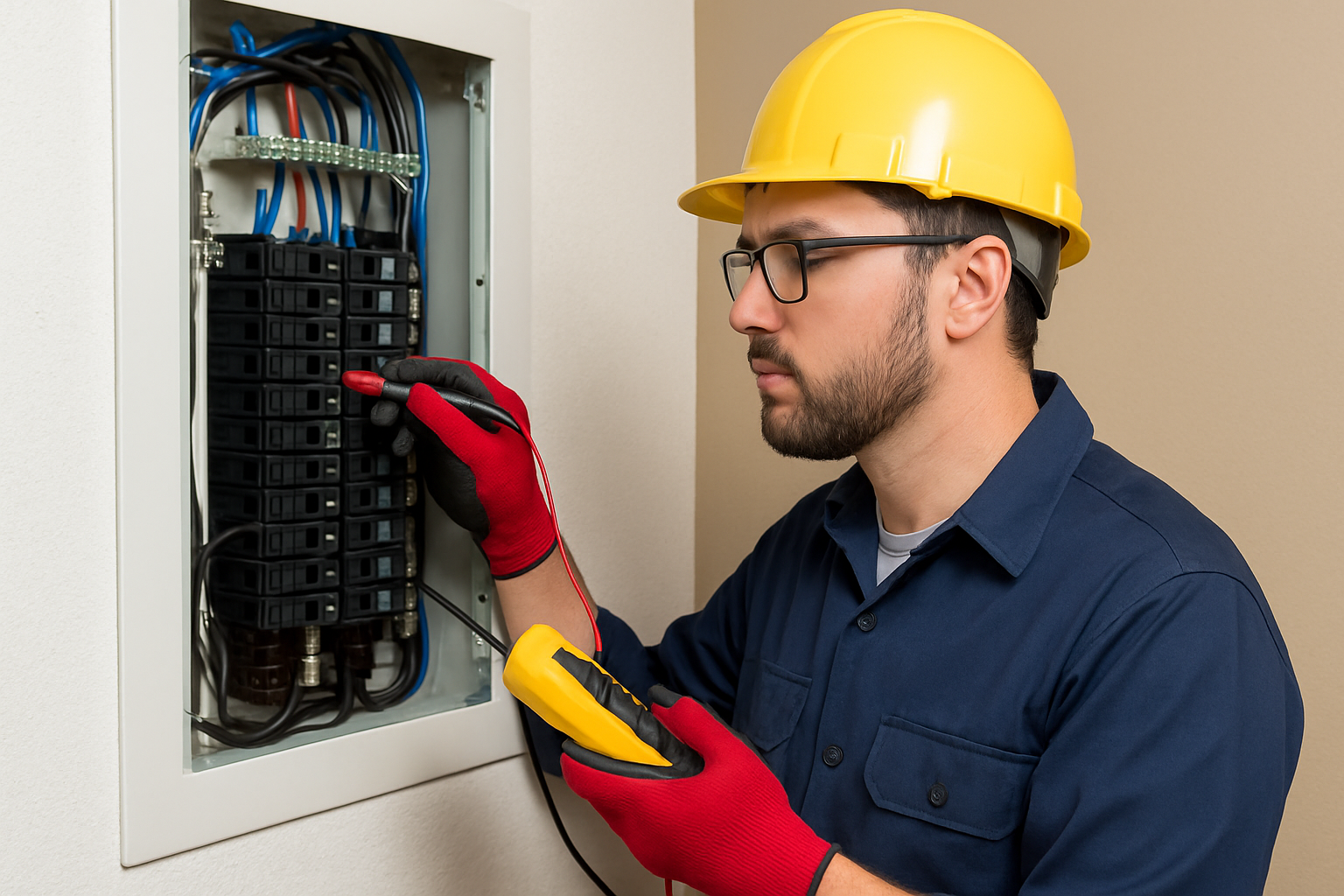Keep your home safe and your circuits sane—before things go from “DIY” to “Why did I do that?”
Electricity: can’t live without it, really shouldn’t mess with it. It powers your fridge, your lights, your coffee maker—and if you’re reading this, your Wi-Fi too (phew). But while your home’s electrical system hums away in the background, even a small issue can become a shocking problem if ignored.
So, we asked real electricians what they wish homeowners would check before calling in reinforcements. Here are 10 easy, smart, and safe checks you can do yourself—no voltage tester tattoo required.
1. Look for Flickering or Dim Lights
If your lights dim when you use the microwave or flicker like you’re in a horror movie, that’s not “mood lighting”—that’s a sign something’s loose or overloaded. Check the bulbs first, but if it keeps happening, it may be a wiring issue or overloaded circuit.
🛠 Hardware Guy Tip: If your lights flicker more than your grandma’s old TV, call in a pro. You don’t want to DIY drama in your panel box.
2. Test All Outlets for Power & Heat
Plug in a small lamp or outlet tester (cheap and handy) and make sure each outlet works. If any outlet feels warm to the touch or smells burnt—unplug immediately. That’s a red-hot red flag.
🧯 Pro Tip: Heat = resistance. Resistance = fire hazard. Fire = bad.
3. Check for Ungrounded or 2-Prong Outlets
Still rocking old-school 2-prong outlets? That means no ground wire—aka, less protection from electrical shocks. Especially risky for bathrooms, kitchens, or anywhere moisture and appliances meet.
⚡ Upgrade Idea: Replace with grounded 3-prong GFCI outlets if possible. Or better yet, get a licensed electrician to ground the whole system.
4. Test GFCI Outlets Monthly
GFCIs (Ground Fault Circuit Interrupters) are the outlets with “Test” and “Reset” buttons. Press the test button, make sure the outlet shuts off, then hit reset. If it doesn’t trip and reset properly—replace it.
✅ Remember: GFCIs are like smoke alarms for your outlets—silent until they save your bacon.
5. Peek at the Electrical Panel (Carefully!)
Open the panel door and look for signs of trouble: rust, scorching, or any circuit breakers that feel hot or smell burnt. Your panel should look clean, organized, and not like a 1980s spaghetti horror.
🧰 Helpful Hardware Guy Says: If your breakers look like they’ve been through a bar fight, call an electrician before your whole panel taps out.
6. Check Extension Cords & Power Strips
Look under beds, behind TVs, and in the garage. Extension cords aren’t permanent wiring. Frayed cords or daisy-chained strips are a major fire risk.
🔥 Golden Rule: One power strip per outlet. If you’ve got a strip plugged into a strip—congrats, you’ve built an illegal tower of doom.
7. Inspect Outdoor Outlets & Fixtures
Outdoor outlets should have weatherproof covers and be GFCI-protected. Also check any porch lights or sheds for cracked wiring or corroded connections.
🌧️ Pro Reminder: Water and electricity go together about as well as cats and bubble baths.
8. Look for Tripped Breakers or Blown Fuses
A tripped breaker now and then? Normal. The same breaker tripping every time you microwave a burrito? Not so normal.
⚡ Helpful Hardware Humor: A microwave should heat your lunch, not your entire electrical panel.
9. Scan for Loose Light Switches & Plates
Wobbly switches or outlets that jiggle are more than annoying—they can mean loose wires or aging components behind the wall.
🛠 Quick Fix: If it’s just the plate, tighten it. If the whole box is loose? It might need remounting—or rewiring.
10. Smell Anything Weird?
Burning smells, especially around outlets or your panel, should never be ignored. If your wall smells like someone’s roasting marshmallows behind the drywall—it’s time to cut power and call in the cavalry.
🧠 Hardware Guy Rule #1: When in doubt, sniff it out. When in doubt and you smell burnt plastic? Shut it down and call an electrician.
Final Thoughts: Know When to Call a Pro
These 10 checks can help keep your home safe, your family protected, and your electrical system in tip-top shape. But remember—if anything feels over your head (or starts buzzing when it shouldn’t), call a licensed electrician. There’s no shame in staying alive and spark-free.
And hey—if you found this post helpful, drop a comment or check out the other DIY tips at HelpfulHardwareGuy.com. Your tools—and your toaster—will thank you.







Leave a Reply